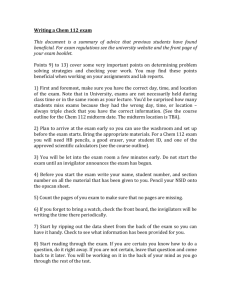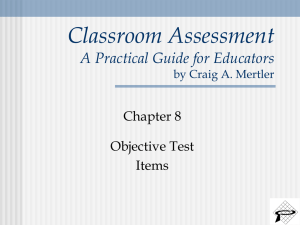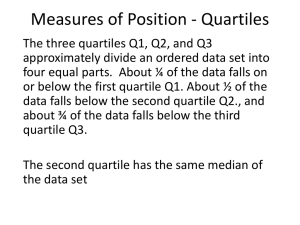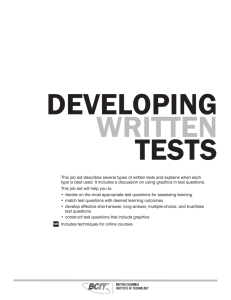Using Data to Improve AP Equity & Excellence
advertisement
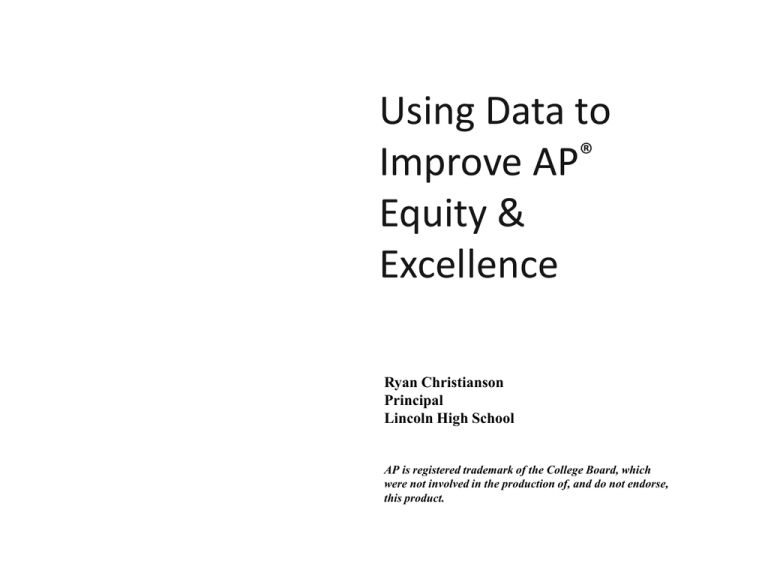
Using Data to Improve AP® Equity & Excellence Ryan Christianson Principal Lincoln High School AP is registered trademark of the College Board, which were not involved in the production of, and do not endorse, this product. How can data be used to engage the school community in improving AP Equity & Excellence? Survey of AP Data Use What kind of data is available to your school? Who has access to the data? How is the data currently being used? What kind of new data can you seek or generate on your own? Online Sign-in For AP Educators https://epl.collegeboard.com/epl/login.do Teacher Online Portal for all AP teachers approved through the AP Course Ledger AP Instructional Planning Report • Subject-specific report showing the performance of students on the multiple-choice and free-response sections and on specific topics within that AP Exam, compared to all students • A powerful resource for AP teachers: helps teachers target areas for increased attention and focus in the curriculum. Can help guide teachers in course planning and professional development • With the new online system, teachers now get their AP Instructional Planning Reports directly, and earlier in the summer so that they can make any curriculum adjustments in time for the new school year. AP Instructional Planning Report (Page 1) • The top bar graph and chart show how this group of students performed overall versus the global population. • Bottom two bar graphs and charts show student performance on multiple-choice and freeresponse sections. AP Instructional Planning Report (Page 2) The second page provides a detailed view of students’ performance on specific content categories on the multiple-choice and freeresponse sections. • The Global Mean column provides the average scores of all AP students worldwide on specific content categories within the exam. • The Group Mean column provides this information for your students. • Right-hand side shows how your students fall into global quartiles. Grouping of students in the higher/lower fourths indicates higher/lower performance than the total population. Administrators and AP Coordinators have more data options, including data from previous years For best viewing…select PDF Format For best data analysis…select Excel Options Consider your “Group” as compared to the “Global“ (Page 1) “Group” verses “Global” Mean (Page 2) • The Global Mean column provides the average scores of all AP students worldwide on specific content categories within the exam. • The Group Mean column provides this information for your students. • Right-hand side shows how your students fall into global quartiles. Grouping of students in the higher/lower fourths indicates higher/lower performance than the total population. Micro-analysis of data points from Page 2: Multiple-Choice Section •Max score •Global Mean Score •Group Mean Score •Group scores compared to quartiles Micro-analysis of data points from Page 2: Performance on Free-Response Section •Max score •Global Mean Score •Group Mean Score •Group scores compared to quartiles Access additional data from AP Central for deeper micro-analysis Question Mean Standard Deviation Number of Points Possible 1 3.43 1.45 9 2 3.57 1.60 9 3 2.65 1.60 9 4 2.86 1.60 9 5 3.24 1.61 9 2010 FRQ Scoring Statistics for AP US History Generating disaggregated data for your AP Instructional Planning Report This opportunity to customize your APIPR data analysis can offer educators a new approach to identifying curricular deficits. CAUTION! This type of data analysis requires a well thought out plan with focused goals. Utilizing the “School Use Only” option on students’ AP Exam answer sheets allows educators to gather unique and specific data for: ◦ disaggregating class sections ◦ tracking study groups ◦ engaging action research Student AP Answer Sheet & Section Selection for IPR Reports Tip: Create your IPR sections before the AP testing week so proctors can fill in the proper ovals at the exam site. Student Answer Sheet with cutout of the old version of the Student Roster Report Disaggregated v. Aggregate Data Multiple Choice Sections Free Response Sections How might you disaggregate data on your APIPR, or engage other uses of the APIPR to better promote student achievement? The Wisconsin Idea Today …education should influence and improve people’s lives beyond the university classroom. • • • • Building Wisconsin’s economy Advancing health and medicine Educating young and old Enhancing quality of life Obama’s Goal For Higher Education …to have the highest proportion of students graduating from college in the world by 2020. The president believes that regardless of educational path after high school, all Americans should be prepared to enroll in at least one year of higher education or job training to better prepare our workforce for a 21st century economy. AP Equity & Excellence Combining Participation and Performance “The percent of a school’s students who take and pass AP exams is the best AP-related indicator of whether the school is preparing increasing percentages of its students to graduate from college.” Source: Chrys Dougherty, Lynn Mellor, and Shuling Jian, The Relationship Between Advanced Placement and College Graduation (National Center for Educational Accountability, 2006) How can data be used to engage the school community in improving AP Equity & Excellence?








